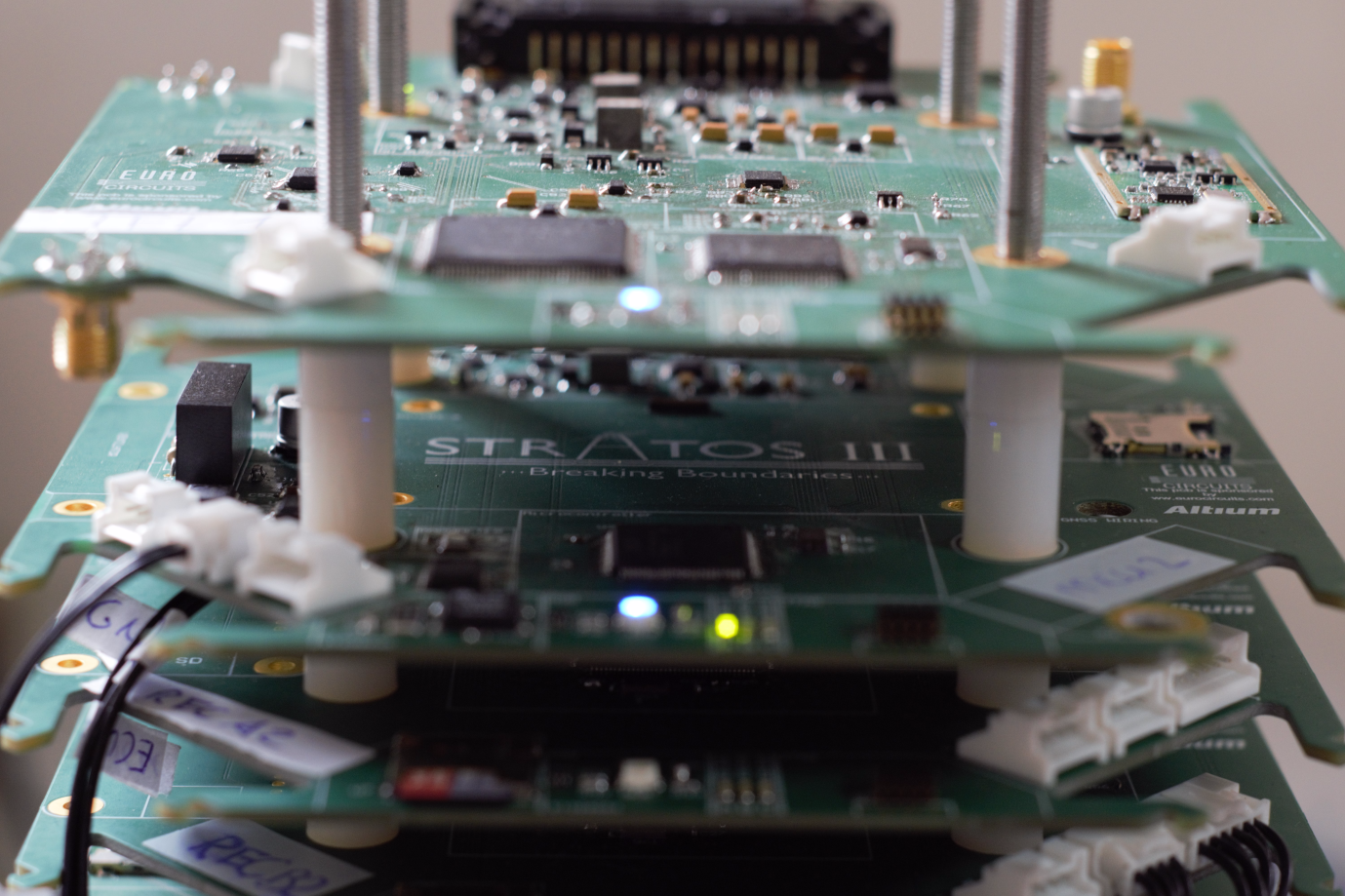
The engineers of our electronics department have been testing a lot today – with the most important test being the flight termination system partial test. This was done in cooperation with the Spanish Aerospace Agency INTA who provides us with the launch facility in the south of Spain. The stakes were high because in case of disapproval of the INTA officials, we might have had to do a redesign of some of the electronics hardware in the engine bay, with possible delays as a result. Fortunately, the test went very well and this means we are still on schedule to launch on the 20th.
In the mean time, other members of the electronics team were working their rear parts off with all kinds of other tasks. Programming the user interface for mission control was one of the things that was done today. It is extremely important that the people who monitor the rocket behavior during flight can quickly spot possible anomalies and react accordingly. Telemetry data that is fed to the screens needs to be interpreted correctly and the more important data such as the current position needs to be displayed more prominently than other data. Possible flight termination relies heavily on this.
New simulations were ran as well with the accurate weight and center of gravity of the rocket that were measured yesterday. Although weather data is still very hard to predict, different wind speeds have also been included in the newest batch of simulations. This is extremely important to make the right decisions and to be 100% certain we land in the designated safety zone.
A question we get a lot is why we travel all the way to Spain to launch our rocket. The simple answer to this is that the Netherlands is way too small for such the huge possible trajectory that Stratos III might travel in. Our safety zone that will be cleared of marine- and air traffic is roughly 90 km into the direction of the sea and 20 km wide. To do this in the Netherlands would simply be impossible.
With the simulations done, the team can now finally orient the launch tower in the most optimal direction and angle, which is planned for tomorrow. Also, with the electronics testing close to being finished the important electromagnetic compatibility test is one step closer, which is vital for a safe flight of Stratos III. Stay tuned and don’t miss a thing!
by Jos van ‘t Hof


